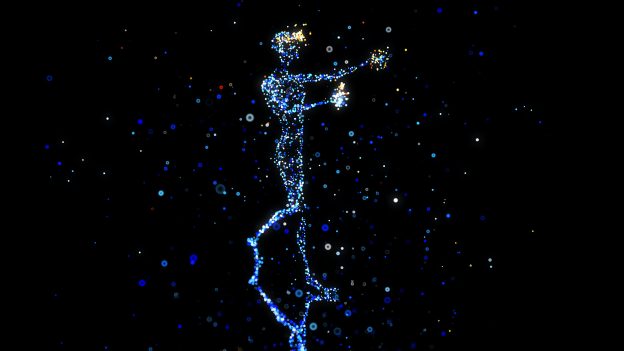Alexander Plansky—Contrary to reports that Bruce Willis sold the rights to use his face to a deepfake company, representatives for both the actor and the company have denied those rumors. Willis’ recent aphasia diagnosis led to his retirement from acting after a decades-long Hollywood career. It was originally reported that by selling his image to Deepcake, a deepfake firm, the company would employ machine learning technology to create a digital twin of Willis that could continue acting indefinitely.
In reality, with the star’s permission, Deepcake merely employed a deepfake of Willis in an advertisement for Russian telecom giant Megafon, which imposed his face over that of a Russian actor’s. Deepcake has since clarified that only Willis possesses the rights to his image, and a spokesperson for the star clarified that he had no deal with Deepcake to create a virtual twin.
Despite this setback, the concept of the digital celebrity marches on. Recently, James Earl Jones signed over rights to his voice to Ukrainian tech firm Respeecher, so that artificial intelligence can recreate it for future Darth Vader appearances in Star Wars media. On Instagram, the virtual influencer Lil Miquela has over 3 million followers and signed with prestigious talent agency CAA for a deal including commercial endorsements and film and television appearances. Lil Miquela has performed duets with real singers, stirred drama with her virtual significant others, and displayed real-life merchandise and clothing in her Instagram posts.
So far, her career has fared better than that of digital rapper FN Meka, whom Capitol Music Group cut ties with earlier this year following allegations of cultural insensitivity. Before that, Meka had 10 million TikTok followers and a record deal. However, activists charged that the project exploited African-American stereotypes, down to Meka’s fictional backstory (in which the AI singer spent time in prison) and his use of the N-word. Moving beyond solo artists, virtual bands are also beginning to take off. Universal Media Group formed Kingship, which features four digital characters based on Bored Ape Yacht Club NFTs.
The digital celebrity is nothing new. Sometimes referred to as “synthespians,” the concept of digital celebrity first appeared in the 1987 experimental film Rendezvous in Montreal, which starred digitally recreated versions of Humphrey Bogart and Marilyn Monroe. The 2004 action-adventure Sky Captain and the World of Tomorrow brought Laurence Olivier back as a digital clone to play a villain, marking the first occasion where an actor’s virtual twin performed entirely new scenes in a major motion picture.
Works of fiction have grappled with the implications of this concept for some time. William Gibson, widely considered the father of the cyberpunk genre, tackled the issue in his 1996 novel Idoru, which centered on a virtual singer named Rei Toei. In the 2002 Al Pacino comedy Simone, a director creates the eponymous digital actress, only for her to become massively popular—leading to a variety of antics in which he struggles to keep the truth hidden.
Beyond providing food for thought for authors and filmmakers, the rise of virtual celebrities raises genuine intellectual property questions for the business and legal communities. The first of which is: who actually owns the name, image, and likeness (NIL) of the digital actor/singer? As seen with Bruce Willis and James Earl Jones, actors have the ability to sign over their NIL to a third-party if they so choose. But after their death, a celebrity’s post-mortem right of publicity may depend on where they died. For example, under California law, a celebrity’s heirs can inherit their right of publicity and control their NIL for up to 70 years so long as the celebrity died a California resident. Because of this rule, producers seeking to feature a virtual copy of James Dean in a new production needed to ask his estate’s permission. But they wouldn’t have had to ask Marilyn Monroe’s estate because she died in New York, which has not yet declared an inheritable right of publicity.
Things gets murkier with regard to entirely synthetic personalities like Lil Miquela and FN Meka. Currently, artificial intelligence is not advanced enough to generate self-aware thought on par with humans, so the virtual celebrities of our time are, essentially, fictional characters. The Hollywood Reporter notes that money in deals involving digital personas “ultimately flows to the owner of the avatar.” These personas are not capable of entering into contracts themselves. Any photos they post on Instagram, any songs they sing on TikTok, any lines they perform for a commercial or in a movie, are all powered by technology and the corporation that wields it. When Lil Miquela is paid $10,000 for a sponsored post, her team receives the money. When royalties are paid to the virtual band Kingship, there are secondary royalties paid to the artists who actually create their songs behind the scenes.
It will likely be some time before computer programs are sentient enough to sign their own contracts. However, if these entities advance to the point where they can perform any lyrics or lines that are fed to them without requiring a team of human animators behind the scenes, then they will likely have to be treated as licensable software—and would therefore be subject to the copyright laws that that entails.
Virtual celebrities are undeniably attractive prospects for corporations. They are easier to manage than real celebrities and they do not make unwanted statements. Their entire existence is designed from the ground up to sell products or to perform whatever role is given to them. However, as their popularity grows, it remains to be seen how the mainstream public will react. If the millions of followers for Lil Miquela and FN Meka prove anything, human celebrities may be in for some real competition.


